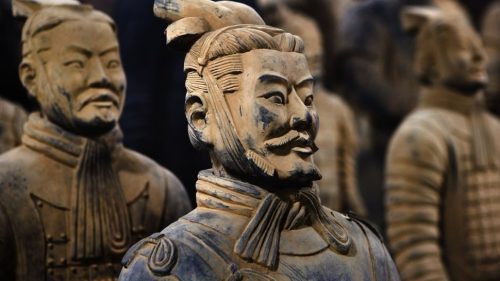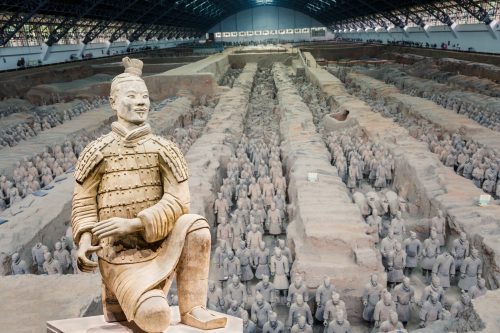
The recent discovery of 20 terracotta warriors near the tomb of China’s first emperor, Qin Shi Huang, has sent shockwaves through the world of archaeology.

Crafted over two millennia ago, these life-sized statues provide a captivating glimpse into the ancient world and the influence of one of China’s most powerful rulers. In this article, we will explore the significance of this remarkable find, delving into the history of the terracotta army, its cultural importance, and the mysteries surrounding Qin Shi Huang’s secret tomb.

- The Terracotta Army: A Brief History
The Terracotta Warriors and Horses, commonly known as the terracotta army, is a vast collection of life-sized clay soldiers and horses buried alongside China’s first emperor, Qin Shi Huang, in the third century BCE. Discovered in 1974, these statues were meticulously crafted to serve as guardians and protectors for the emperor in the afterlife. The sheer scale and intricacy of this archaeological marvel have fascinated the world since its unveiling. - The Terracotta Warriors: A Cultural Marvel
a. Artistry and Craftsmanship: The terracotta warriors stand as a testament to the remarkable artistic and engineering skills of ancient China. Each warrior is an individual masterpiece, featuring distinct facial features, hairstyles, and armor, showcasing an incredible attention to detail.
b. Historical Significance: Beyond their aesthetic appeal, these statues hold immense historical importance. They provide valuable insights into the military technology, clothing, and armor of the Qin Dynasty, shedding light on ancient Chinese warfare and societal norms.
c. Emperor’s Afterlife Beliefs: Qin Shi Huang’s strong belief in the afterlife and his quest for immortality are well-documented. The terracotta army serves as a reflection of his conviction that his rule should extend into the next world, emphasizing his desire to maintain control even in death. - Ongoing Mysteries Surrounding Qin Shi Huang’s Secret Tomb
The discovery of 20 additional terracotta warriors near Qin Shi Huang’s tomb has reignited interest in the mysteries shrouding the emperor’s burial site. Researchers are eager to uncover the secrets concealed within the tomb and understand the full extent of its contents. Questions regarding the scale of the tomb’s treasures, the potential existence of other undiscovered artifacts, and the symbolic significance of these warriors in the emperor’s burial rituals linger.
Conclusion:

The unearthing of 20 terracotta warriors near Qin Shi Huang’s tomb adds a new chapter to the captivating story of the terracotta army and the enigmatic ruler it was crafted for. As archaeologists delve deeper into the mysteries surrounding the emperor’s secret tomb, the world eagerly awaits further revelations that promise to unveil ancient secrets and contribute to our understanding of China’s rich history.





